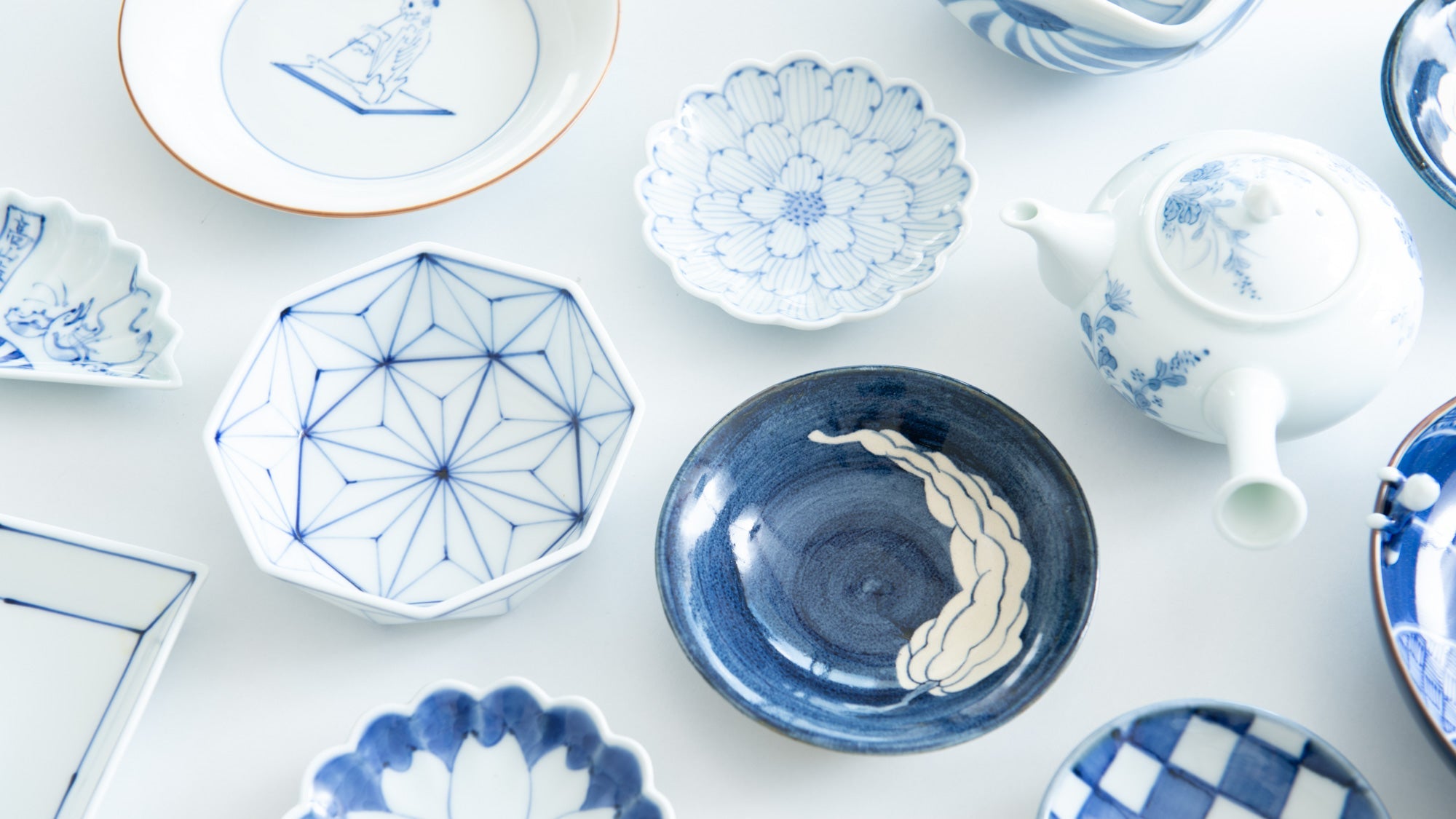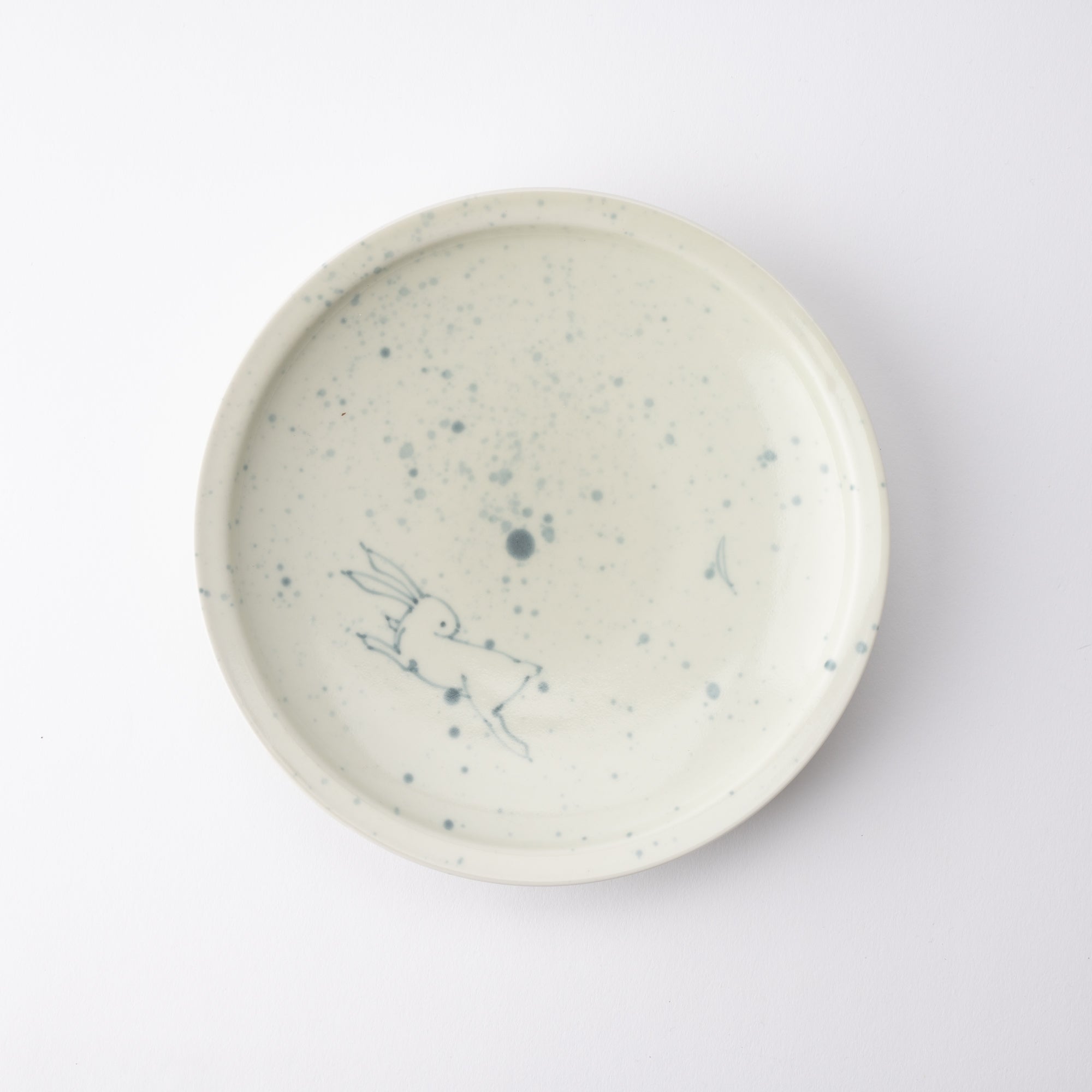
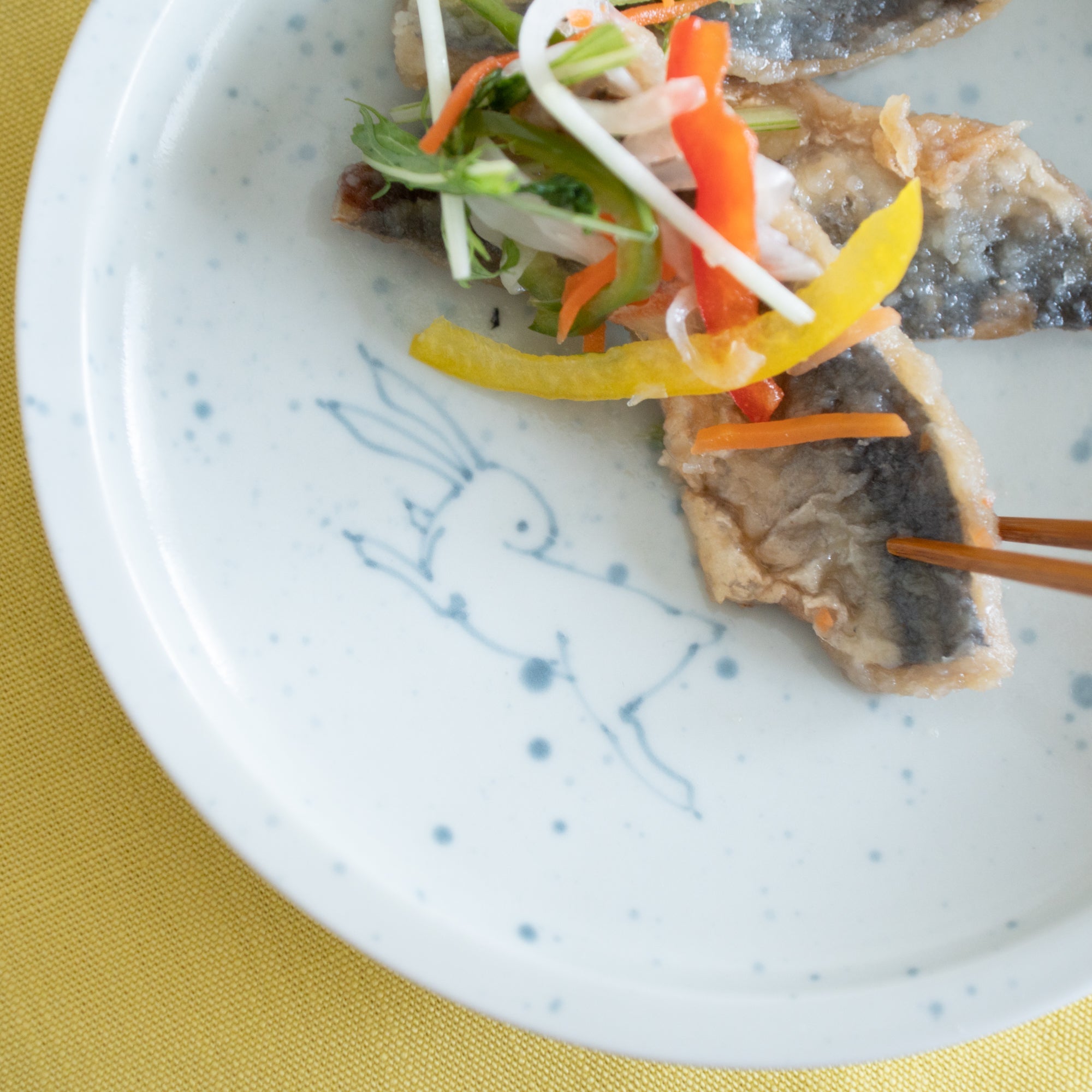
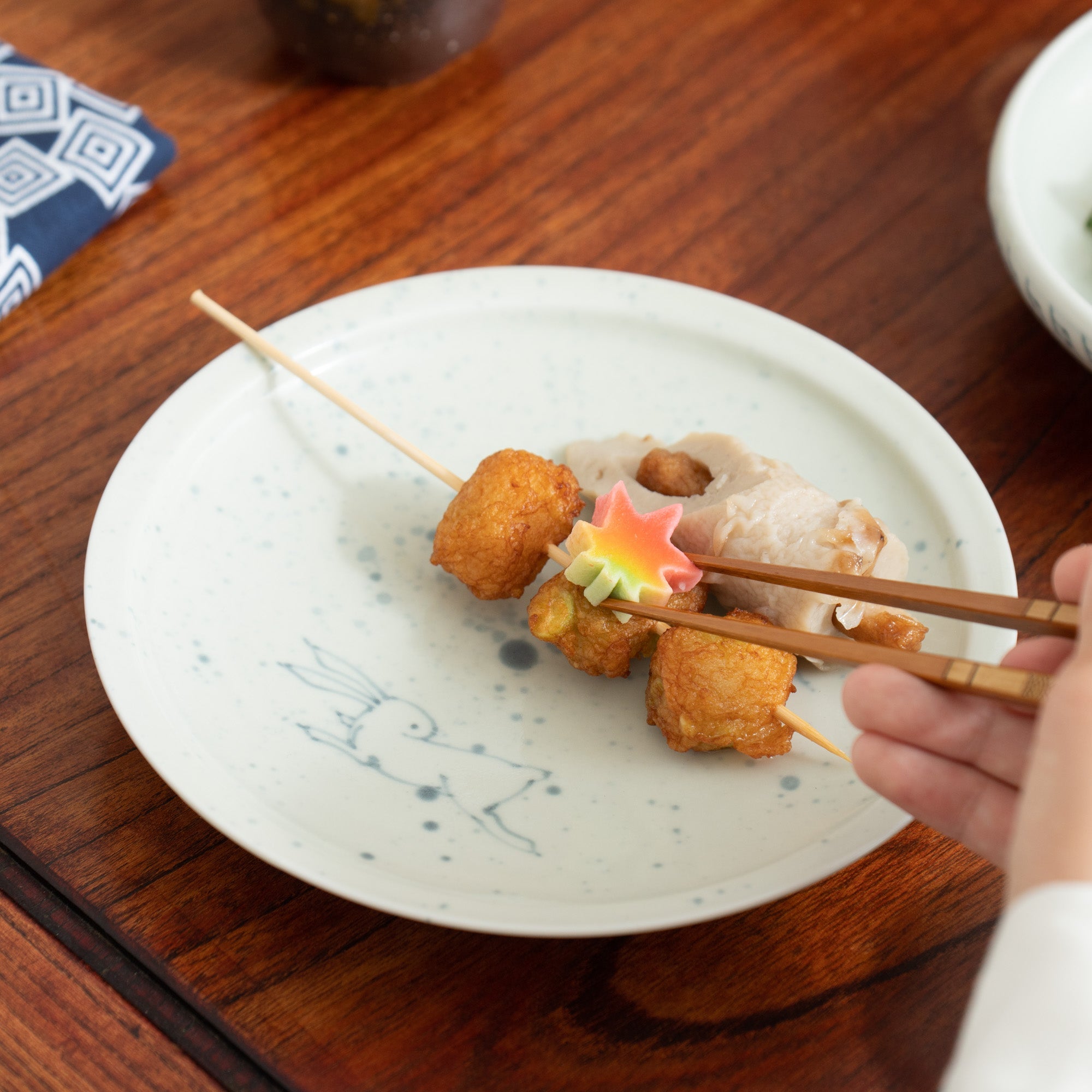
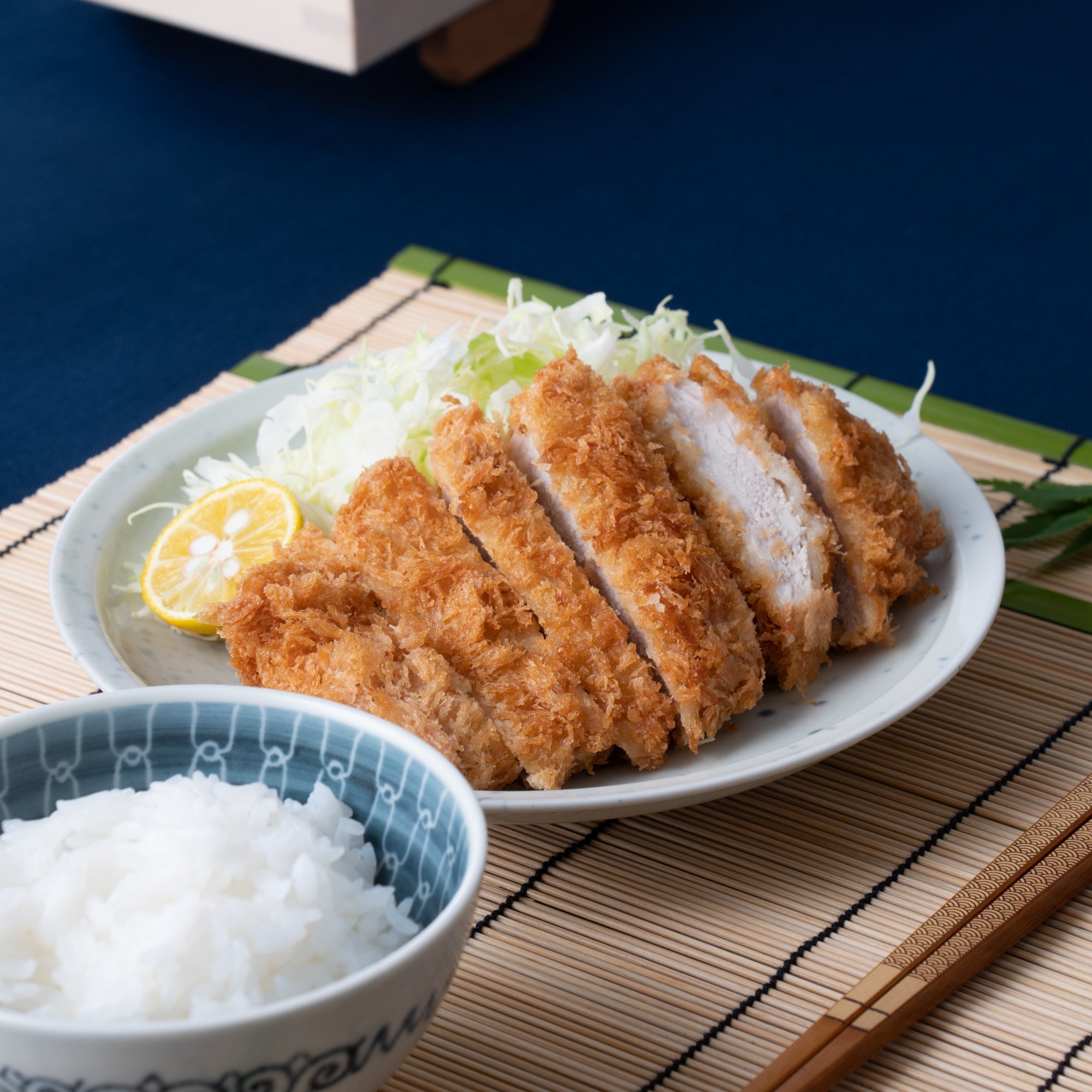
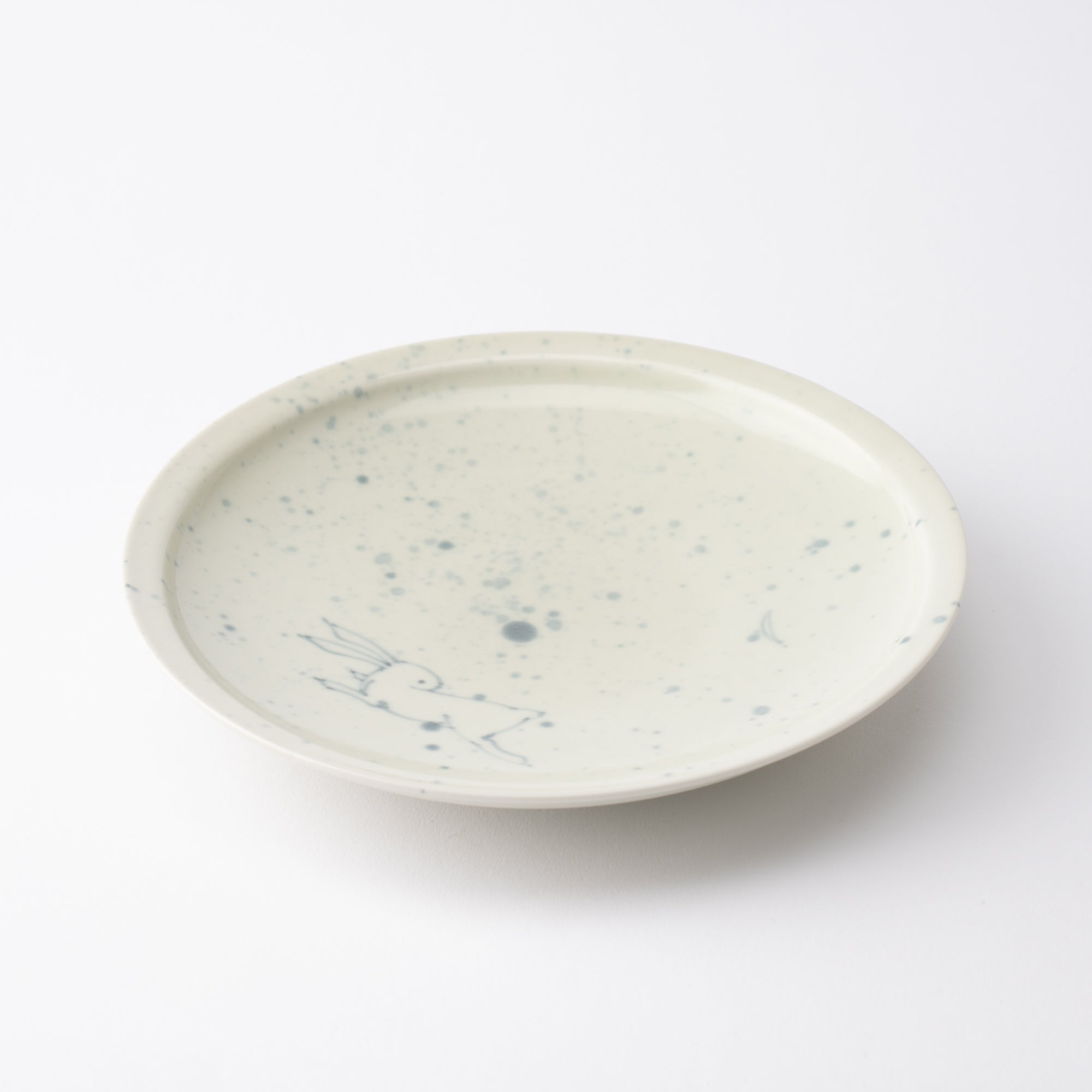
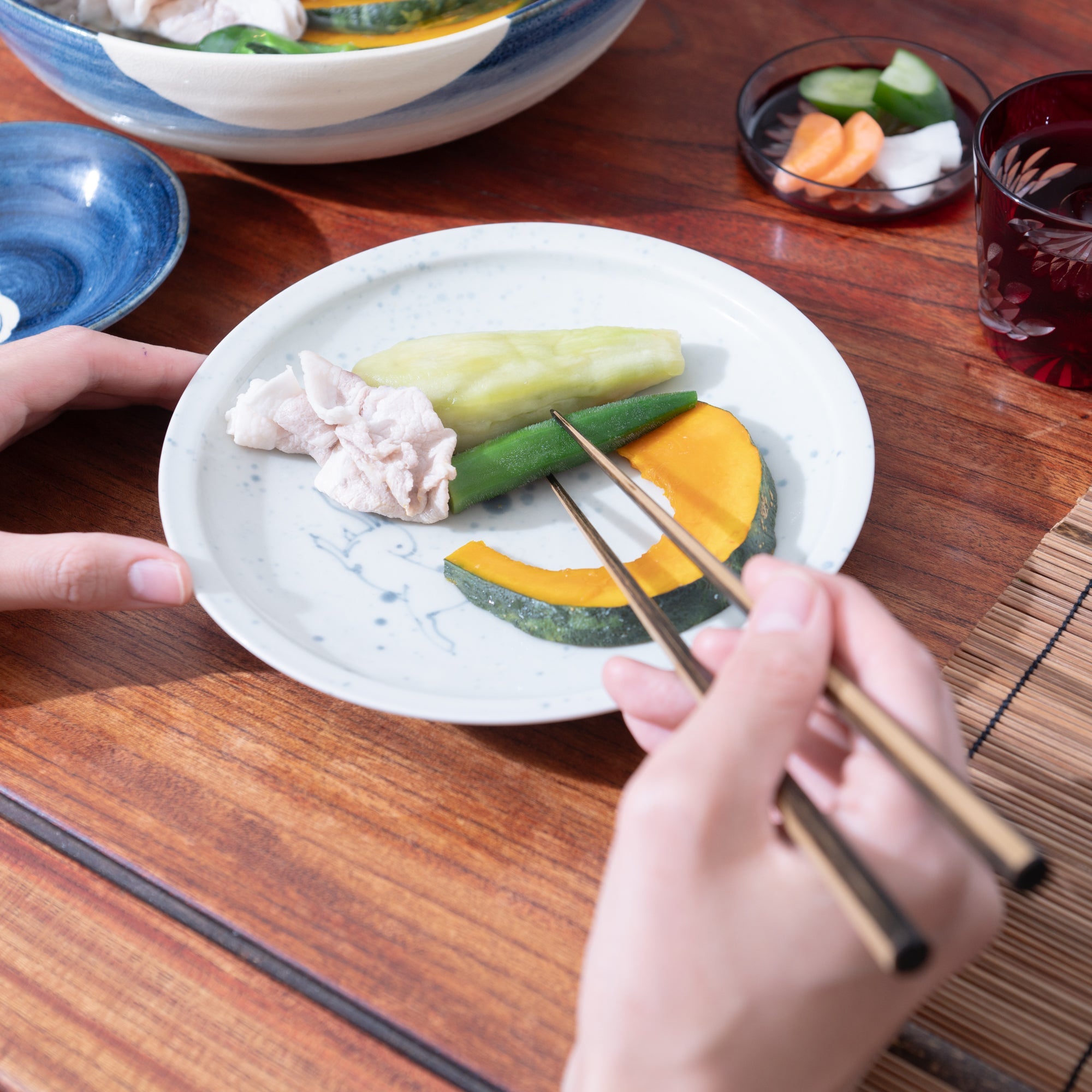
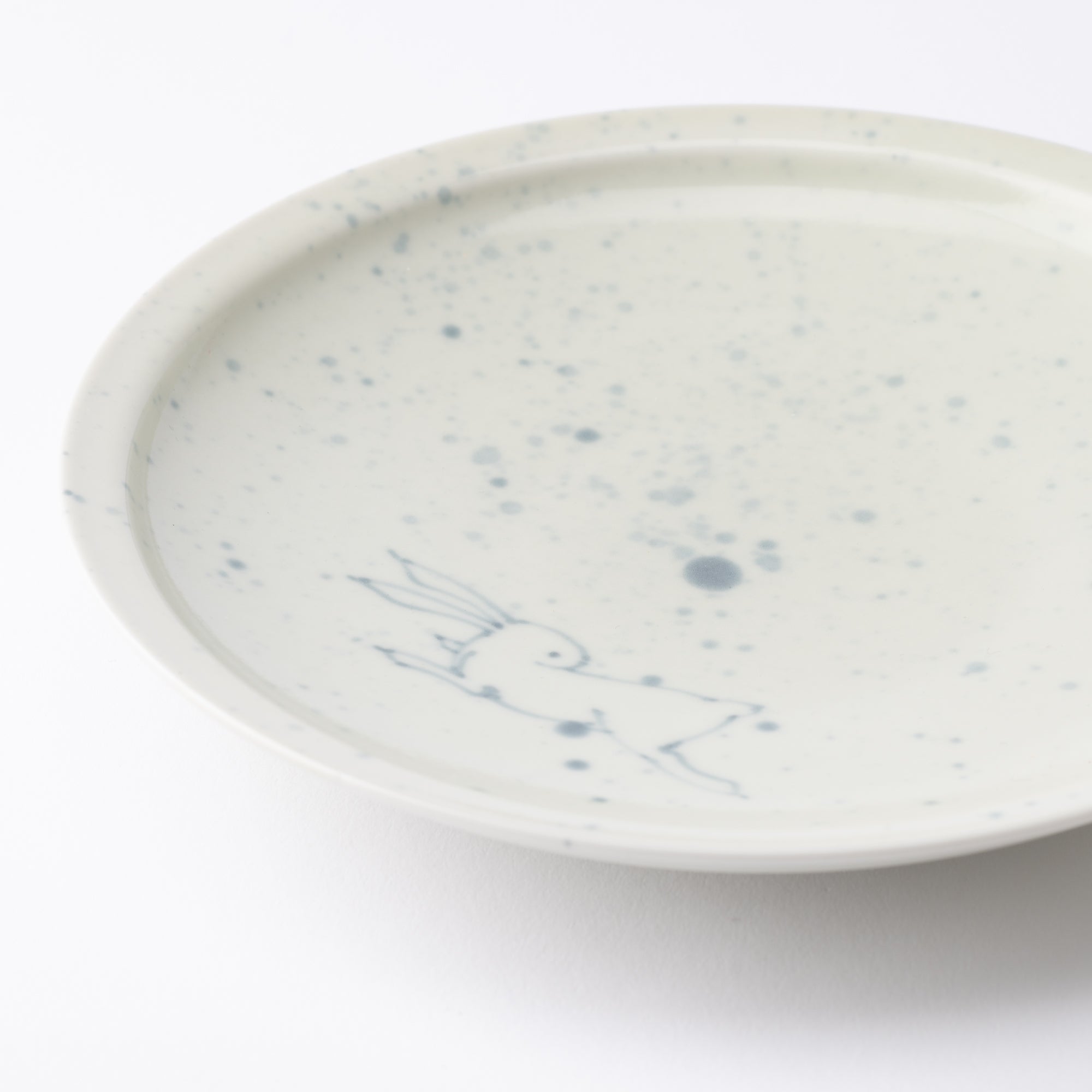
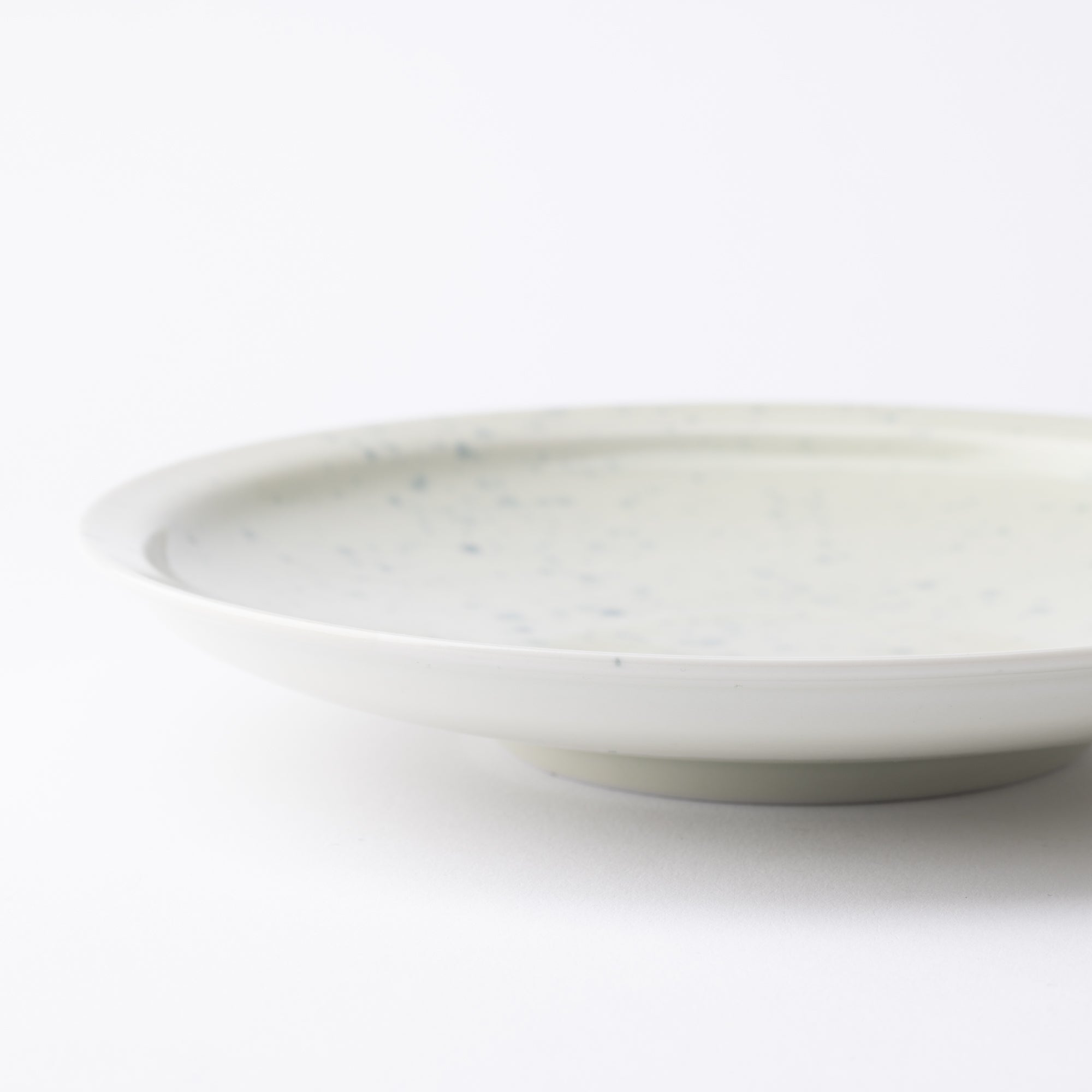
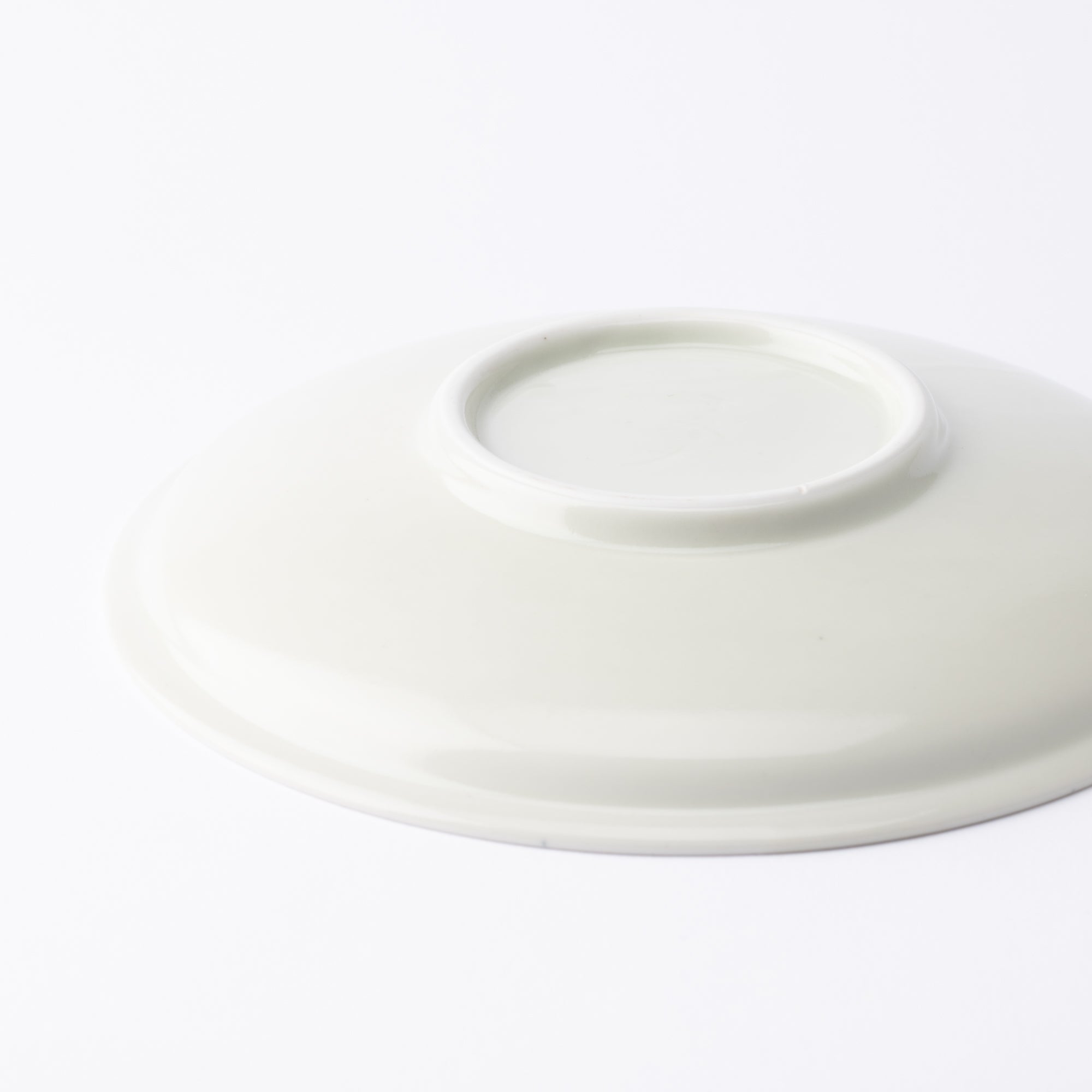
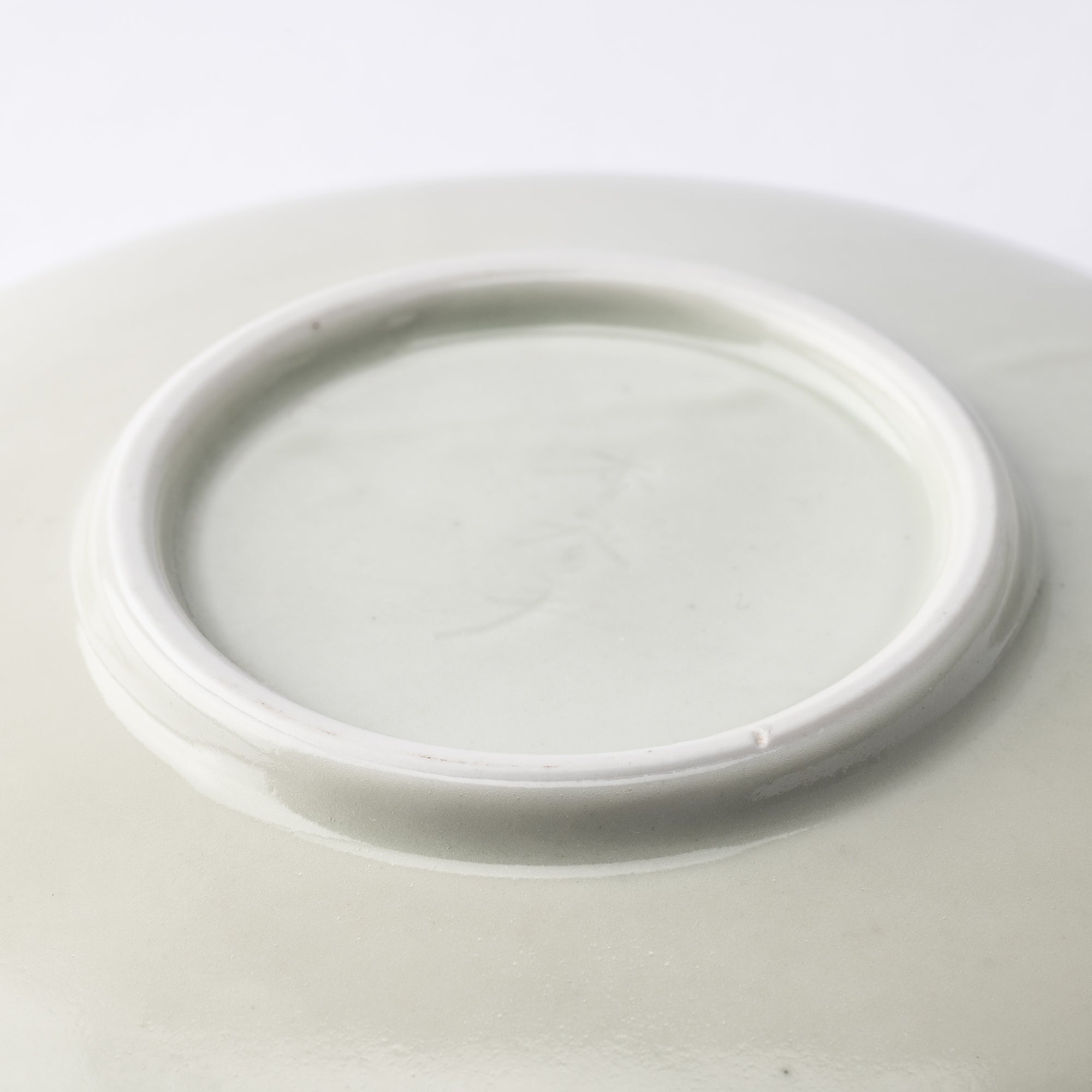
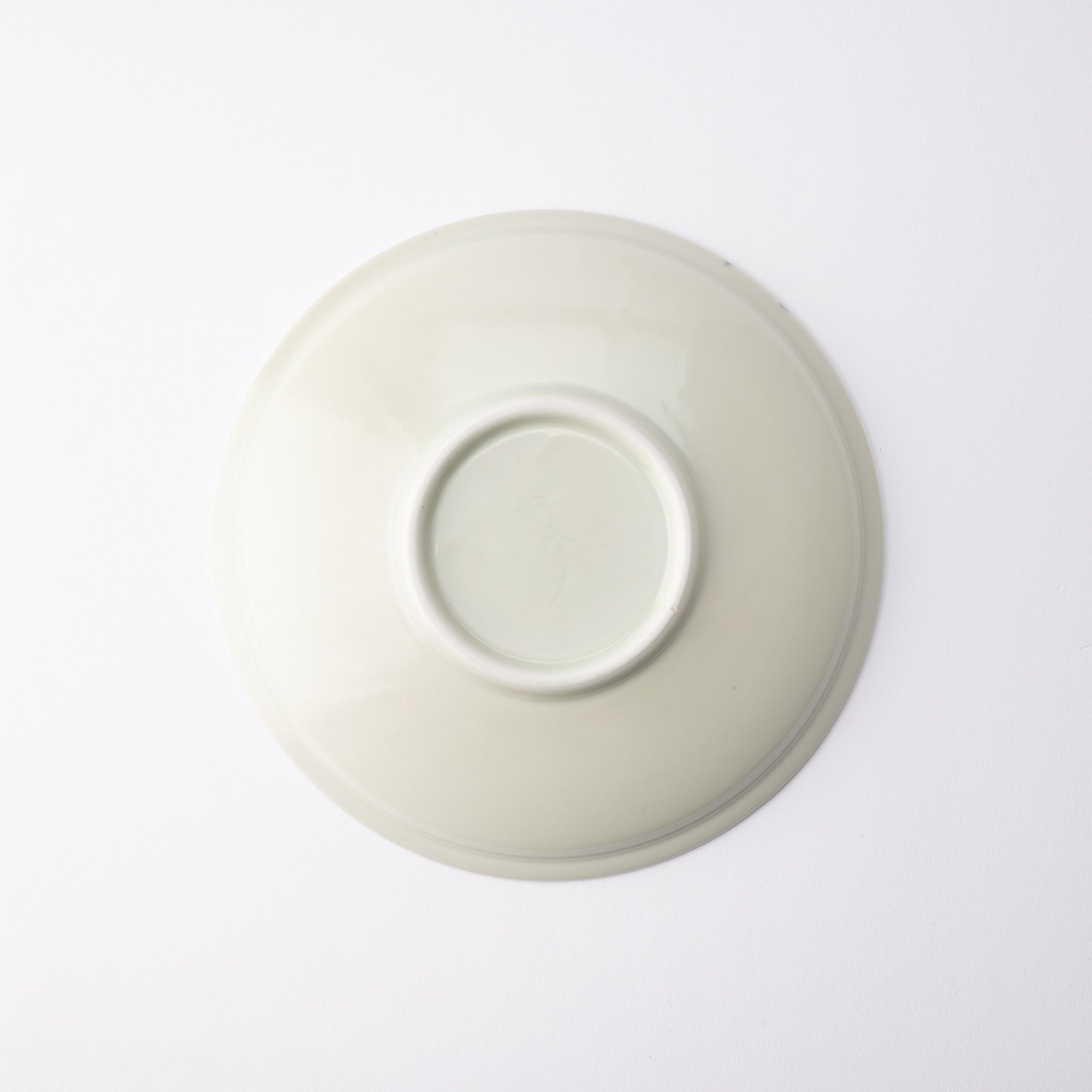
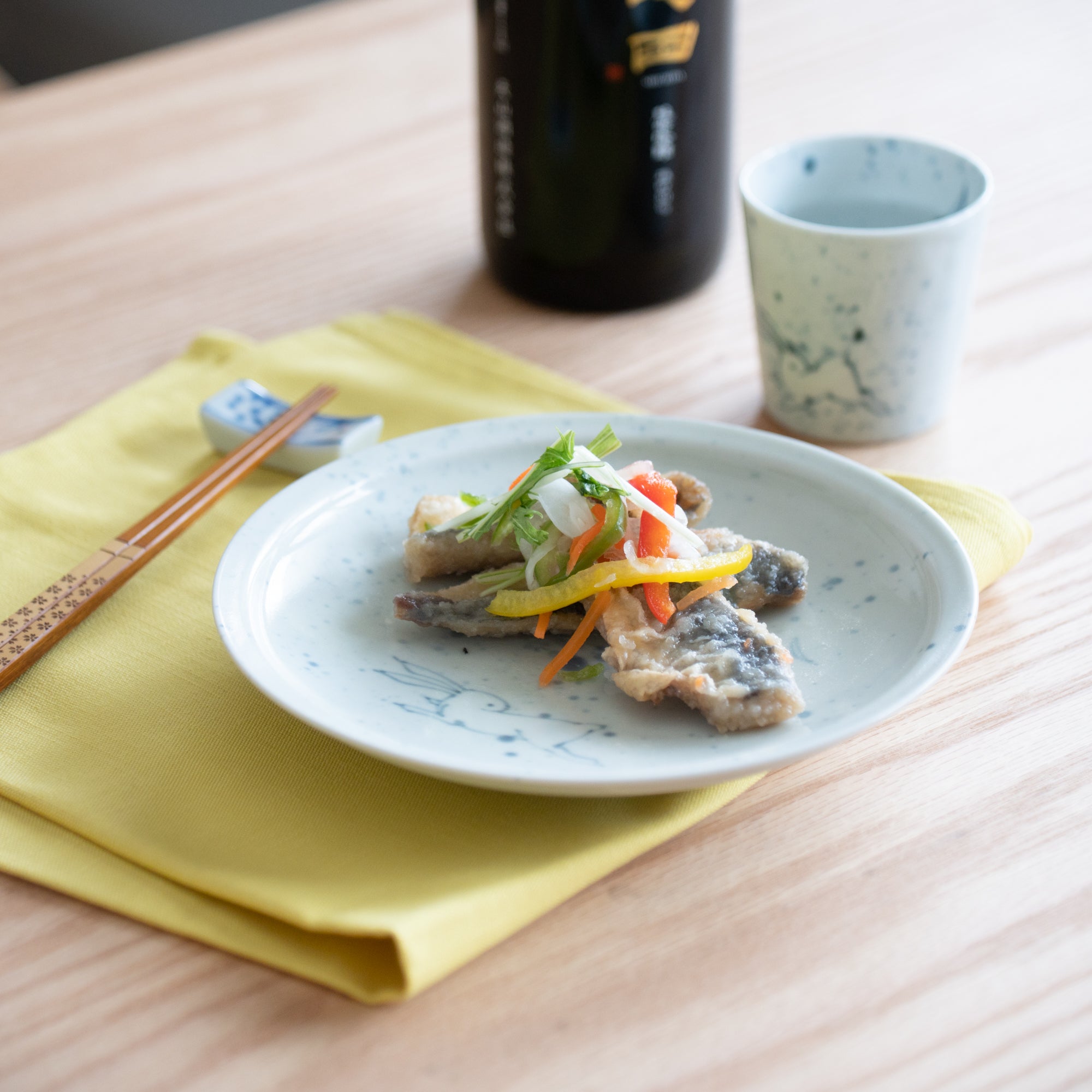
Runder Beilagenteller mit Mondhasenmotiv
Estimated Shipping Widget will be displayed here!
Dies ist ein blau-weißer Beilagenteller aus dem Le Sanpei Kiln, der dem Mond nachempfunden ist. Seine gesprenkelte Oberfläche imitiert kraterartige Texturen, während die filigrane Illustration eines spielerisch über den Teller hüpfenden Kaninchens einen Hauch von Verspieltheit und Tradition verleiht.
Dieses Design wird mit einem Papiermuster in Form eines Kaninchens erstellt, mit gosu (Pigment zum Malen) durch Aufblasen der Spitze eines Pinsels aufgesprüht, um die Form zu bilden. Diese Technik, genannt Fuki-sumi (Tintensprühen) ist in einigen charakteristischen Werken zu sehen. Im Gegensatz zu direkt mit einem Pinsel gemalten Mustern entstehen mit dieser Methode Formen ohne Umrisse, was den unkonventionellen Stil der frühen Imari-Keramik veranschaulicht.
Bei frühem Imari sind die unterglasurblauen Muster einfach und oft großzügig mit Gosu bemalt. Beim Brennen wird die Grundfarbe der Ware leicht getönt und erhält ein halbglänzendes Aussehen.
Perfekte Größe zum Servieren von Salat, Vorspeisen und Hauptgerichten. Das traditionelle und erfrischende blaue Muster und die glatte Textur des Porzellans verleihen dem Gericht ein appetitanregendes Aussehen und eignen sich hervorragend als Sushi- oder Sashimi-Teller.
EINZELHEITEN
| Quantity | 1 |
| Size | D 18.5 cm (7.3 in) x H 3 cm (1.2 in) |
| Material | Porcelain |
| Microwave | Yes |
| Dishwasher | Yes |
Hersteller / Marke
Im frühen 17. Jahrhundert entdeckte der koreanische Handwerker Yi Sam-pyeong, auf Japanisch Le Sanpei (auch Ri Sanpei geschrieben), in Izumiyama, Arita, Töpferstein. Dies führte zur Herstellung des ältesten Porzellans Japans, das heute als Arita-Ware bekannt ist. Er gründete auch Le Sanpei Kiln, der vier Generationen lang in Betrieb war, bevor er geschlossen wurde, sein Name und sein Vermächtnis blieben jedoch bestehen.
Im Jahr 1920 wurde der Ofen von einem Nachkommen in der 13. Generation wiederbelebt, der seitdem in Betrieb ist. Unter der Leitung des Ofenmeisters in der 14. Generation lebt die außergewöhnliche Porzellankunst von Le Sanpei bis heute fort.
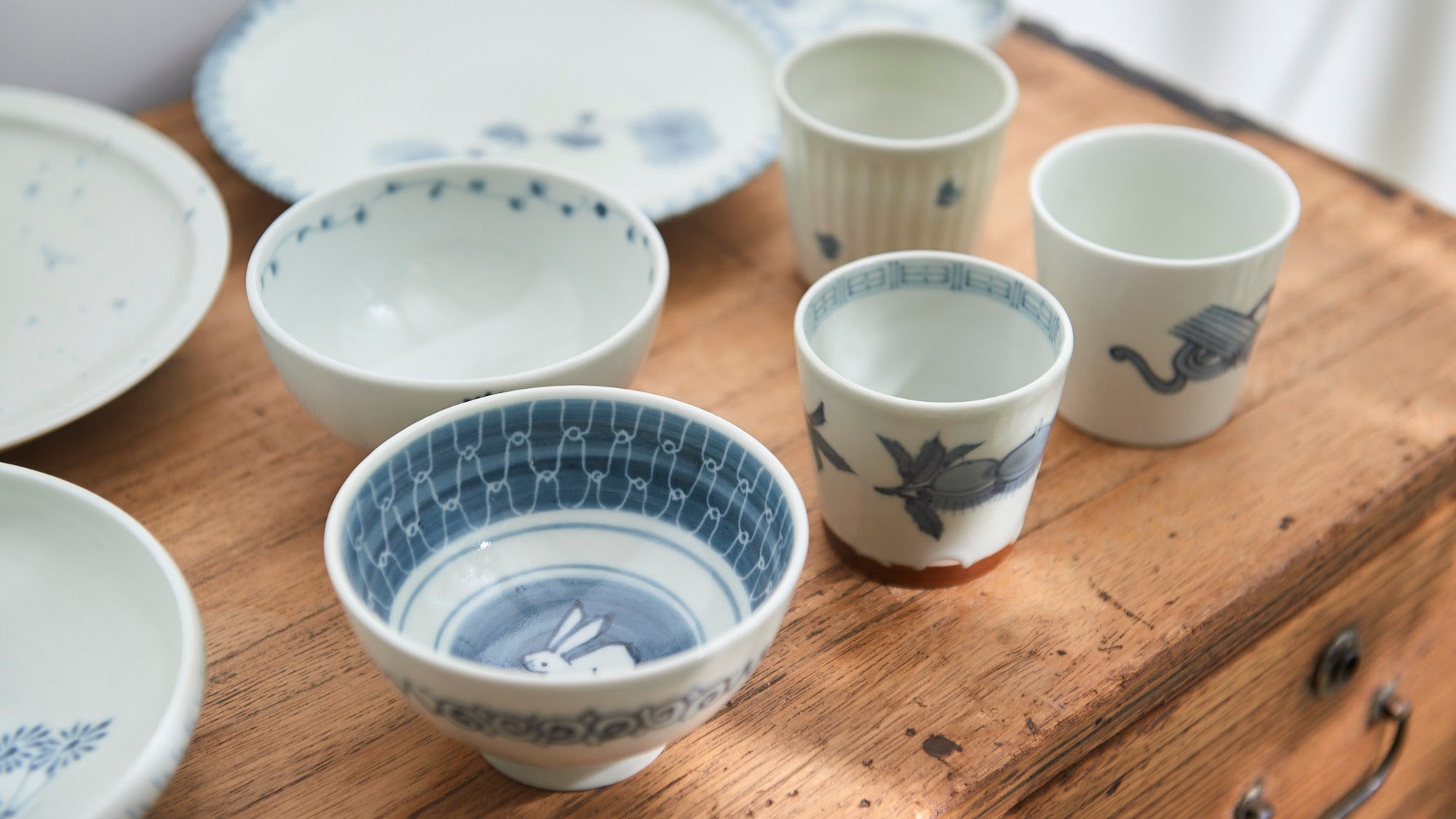
Kunsthandwerk
Arita-Ware wird in der historischen Stadt Arita in der Präfektur Saga hergestellt und gilt als das traditionsreichste Zentrum der Porzellanproduktion in den Annalen der japanischen Geschichte. Charakteristisch für die ätherische, durchscheinend weiße Oberfläche, die mit lebendigen Malereien verziert ist, hat sie das Porzellanhandwerk in ganz Europa nachhaltig beeinflusst.
In Japan genießt Arita-Ware als prestigeträchtige Marke hohes Ansehen und die Stadt Arita gilt als typisches Produktionsgebiet.
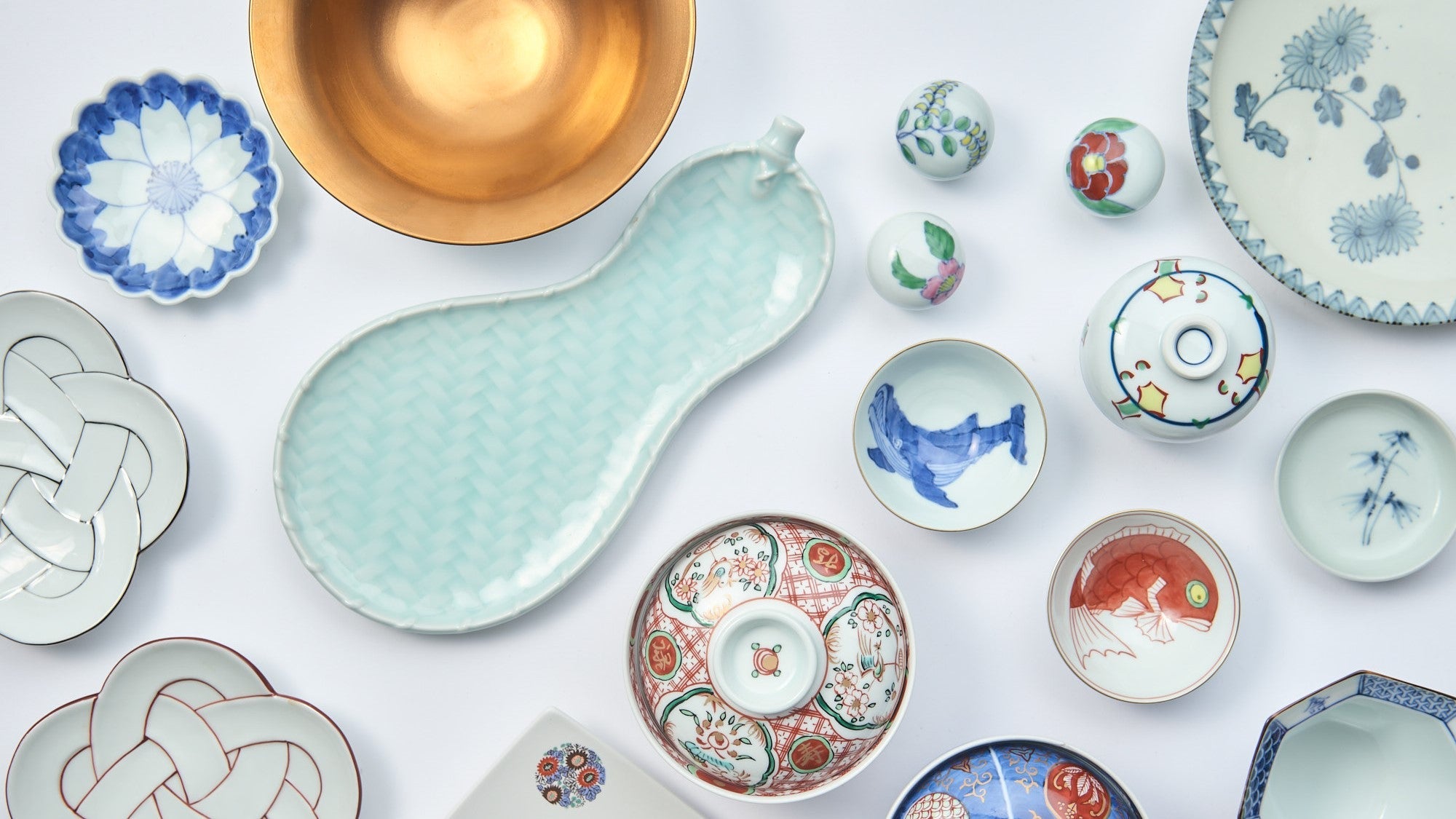
Anmerkungen
Optionen auswählen












Estimated Shipping Widget will be displayed here!
Seitenplatten
Verleihen Sie Ihrem Tisch mit unserer Kollektion japanischer Beilagenteller, fachmännisch gefertigt von Kunsthandwerkern aus ganz Japan, ein Gefühl von Qualität. Die kleinen Teller in unserer Auswahl sind ein Schlüsselelement einer authentischen japanischen Tischdekoration und passen zu jedem Einrichtungsstil, von niedlich und farbenfroh bis klassisch und raffiniert. Diese Gerichte präsentieren Vorspeisen, Snacks, Brot, Süßigkeiten und Beilagen wie Tofu, Salat oder sogar Fischscheiben mit Leichtigkeit und Stil.
Diese Kategorie umfasst Teller mit Durchmessern von 13–20,9 cm (5,1–8,2 Zoll).
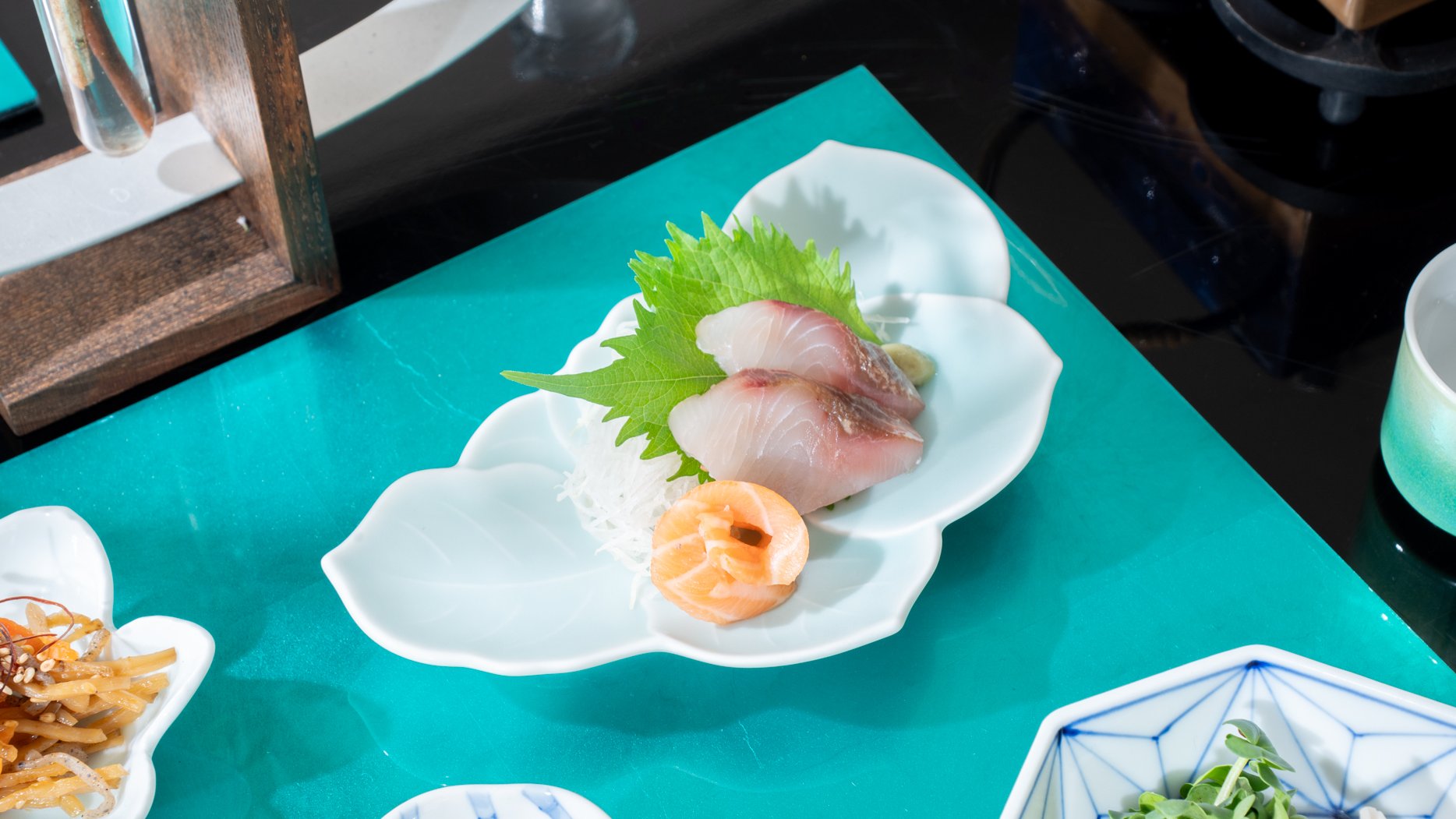
Sometsuke
Sometsuke ist eine dekorative japanische Töpfertechnik, auch bekannt als blau-weiße Keramik. Dieser klassische Stil wird weltweit für seine Eleganz geschätzt. Wir bieten eine große Auswahl an blau-weißen Tellern, Schüsseln, Trinkgeschirr und vielem mehr.
Die optisch ansprechende Farbgebung aus kobaltblauem und weißem Porzellan von Sometsuke bringt die Schönheit von Speisen zur Geltung und lässt sich problemlos mit einer Vielzahl von Geschirr kombinieren. Die feine, glatte Oberfläche und das leichte Tragegefühl sorgen für ein noch angenehmeres Benutzererlebnis.
